Dell PowerEdge M1000e review
Dell beefs up its blade server with higher CPU densities, an innovative IP SAN blade and 40GbE converged Ethernet.
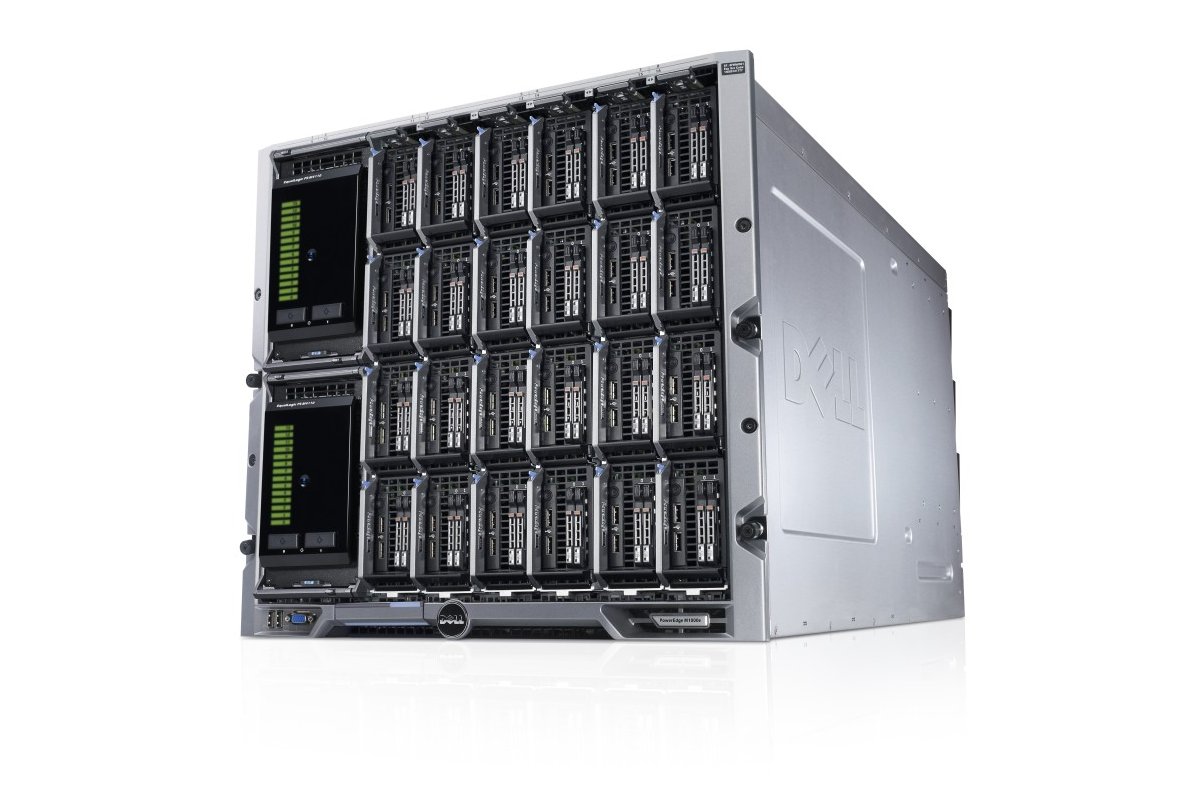

The M1000e has benefitted from a consistent development program and offers some unique and innovative features. An excellent choice for server consolidation duties, it’s well designed and the new storage and server blades make it more versatile.
-
+
Good value; Excellent build quality; Wide choice of server blades and I/O modules; IP SAN blade
-
-
No chassis power graphing and reporting

When we reviewed Dell's M1000e blade server back in 2010 its combination of features, value and design resulted in a coveted IT Pro Recommended award. Dell hasn't rested on its laurels in the intervening period and in another exclusive review, we bring you the low-down on the latest features.
Server blade and I/O interconnect options are more extensive and management see major improvements. The new M420 server blade boosts processing density while the PS-M4110 blade adds Dell's EqualLogic IP SAN technology.
The 10U chassis receives a mid-plane update so that its three interconnect fabrics now all support 10GbE speeds. Existing customers needn't worry as older chassis can be updated in the field with a new mid-plane if required.
Dell offers an ever increasing choice of interconnect modules. Along with Brocade 16Gbps Fibre Channel there are Dell's MXL and I/ O aggregation switch blades which deliver the same features and 40GbE uplinks as its S-Series data centre switches.
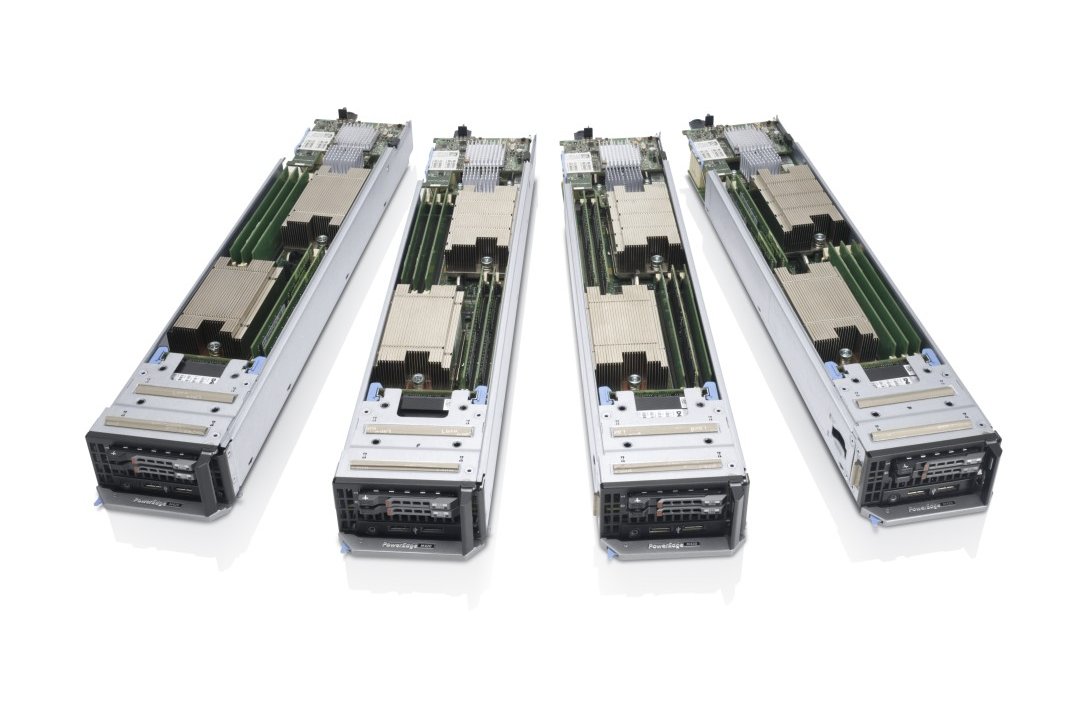
The M420 quarter-height server blade offers a greatly increased CPU density
The M420 packs the CPUs in
Dell offers server blades supporting dual E5-2400, dual E5-2600 V2 and quad E5-4600 CPUs. AMD fans get the older M915 with its quad Opteron 6300s and all accept a range of LOM and mezzanine expansion cards.
The new M420 blade requires a sleeve which converts one of the eight full-height vertical bays into four quarter-height slots. It supports dual E5-2400 CPUs and can handle up to 192GB of 1,600MHz DDR3 memory.
A dual 10GbE LOM card comes as standard and there's room for a mezzanine card for 10GbE, Infiniband or Fibre Channel connections. The latter connects to Fabric B or C which is determined by its physical location in the chassis.
The two hot-plug bays support 1.8in SSDs and are managed by an embedded PERC H310 RAID chip. Two slots on the side accept SD cards for hypervisor redundancy with the second also providing VFlash storage for the embedded iDRAC7 management controller.
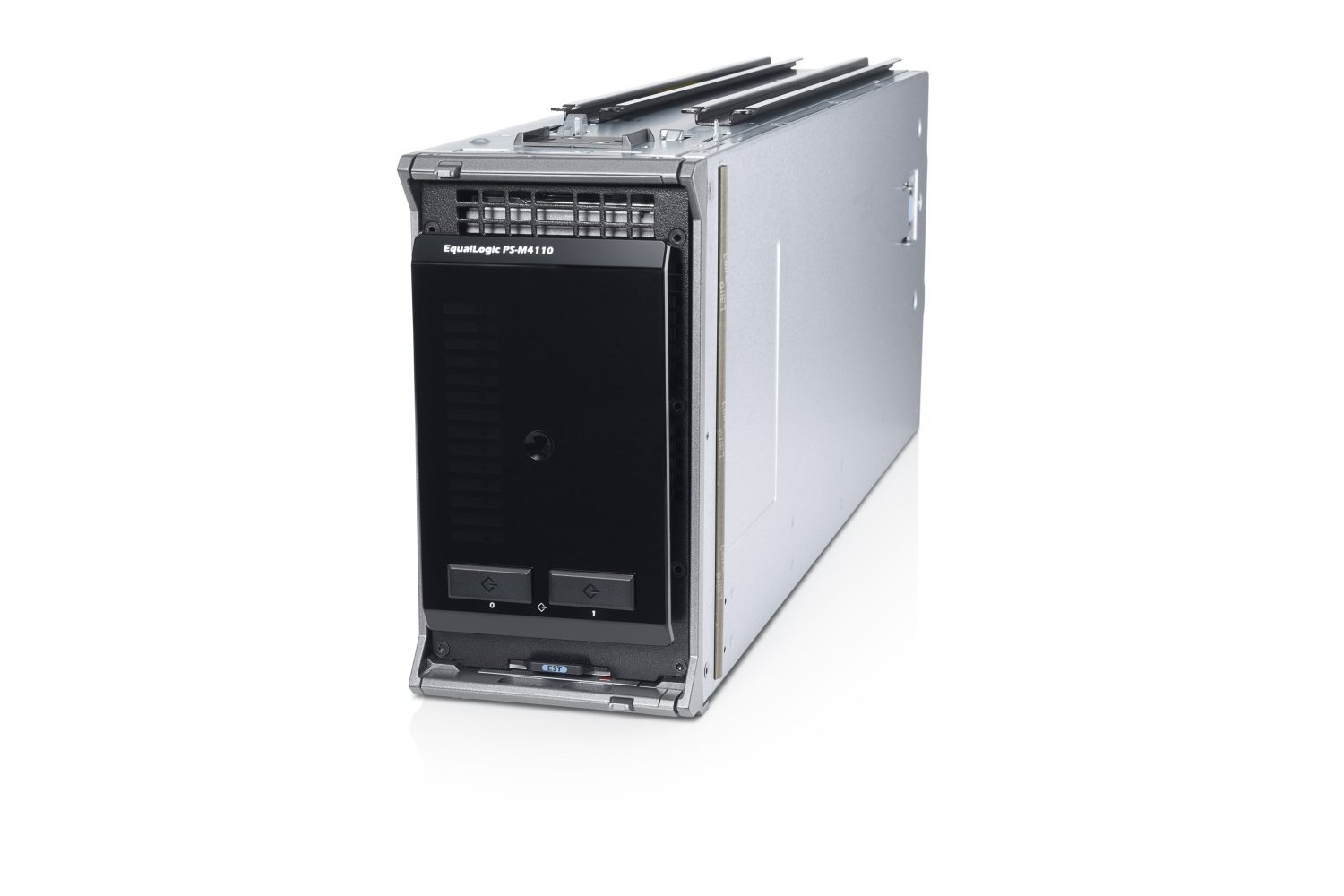
The PS-M4110 allows a complete EqualLogic IP SAN solution to be deployed in the M1000e
IP SAN on a blade
The PS-M4110 blade offers precisely the same storage features as Dell's EqualLogic PS4000 and PS6000 appliances. The combination of Dell's automatic tiered storage and hybrid array of SSDs and SAS hard disks is designed to deliver the high IOPS needed by mission critical apps.
The PS-M4110 is a totally standalone IP SAN on a blade. It's managed and configured in exactly the same way as the standard appliances and can make accelerated storage available to any server blade, or external server for that matter.
This double-width, half-height blade has 14 hot-swap SFF bays accessed from the top. Status lights at the front are provided for all bays and pressing the front of the blade causes it to pop out so you can swap out disks or add extra ones without bringing the blade down.
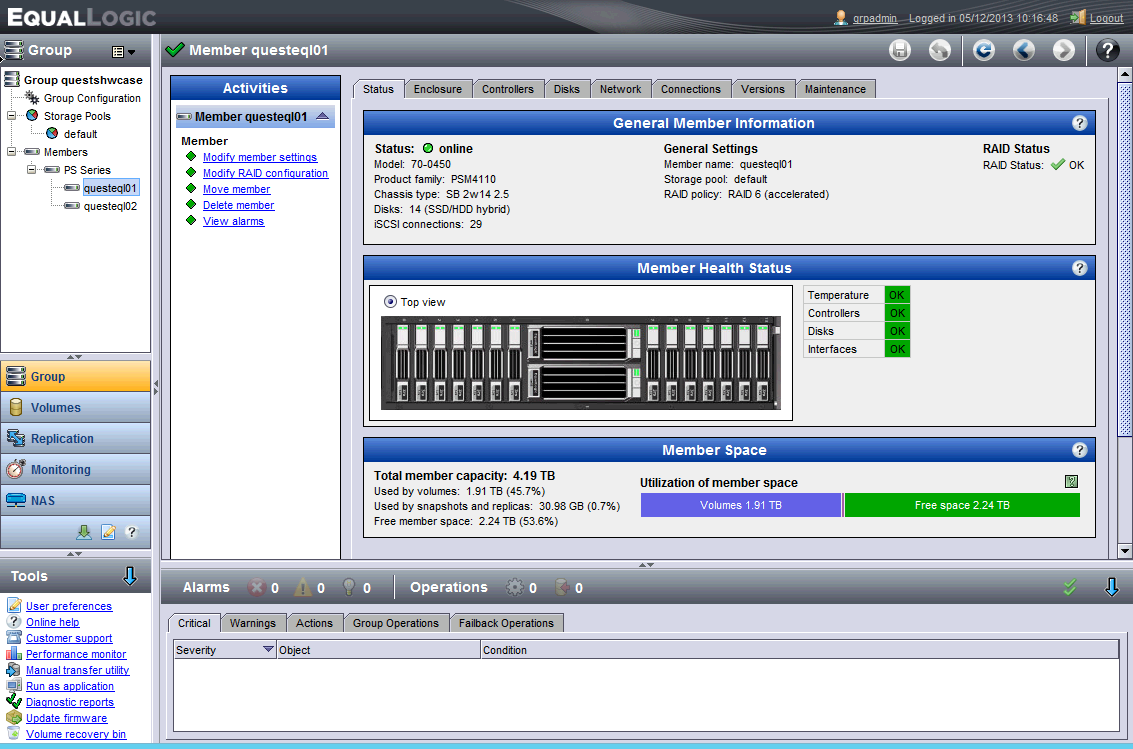
The PS-M4110 blade has exactly the same management interface and features as the EqualLogic PS4000 and PS6000 appliances
MXL and IOA blades
The MXL switch blade delivers the same converged Ethernet features that we looked at in our exclusive review of Dell's S4820T data centre switch. It's equivalent to the S4810T and has 32 internal 10GbE ports, two external 40GbE QSFP+ fibre uplinks and two expansion slots for additional dual 40GbE, quad port Gigabit SFP+ or quad port 1000BaseT modules.
Up to six blades can be placed in a stack which can be extended across multiple M1000e chassis. Dell's VLT (virtual link trunking) allows two blades to be placed in a high availability domain where they are connected via their 40GbE ports.
The IOA version is a zero-touch I/O aggregator switch that is deployed fully auto-configured. It's designed for IT environments with clear demarcations of responsibilities between their server and network divisions.
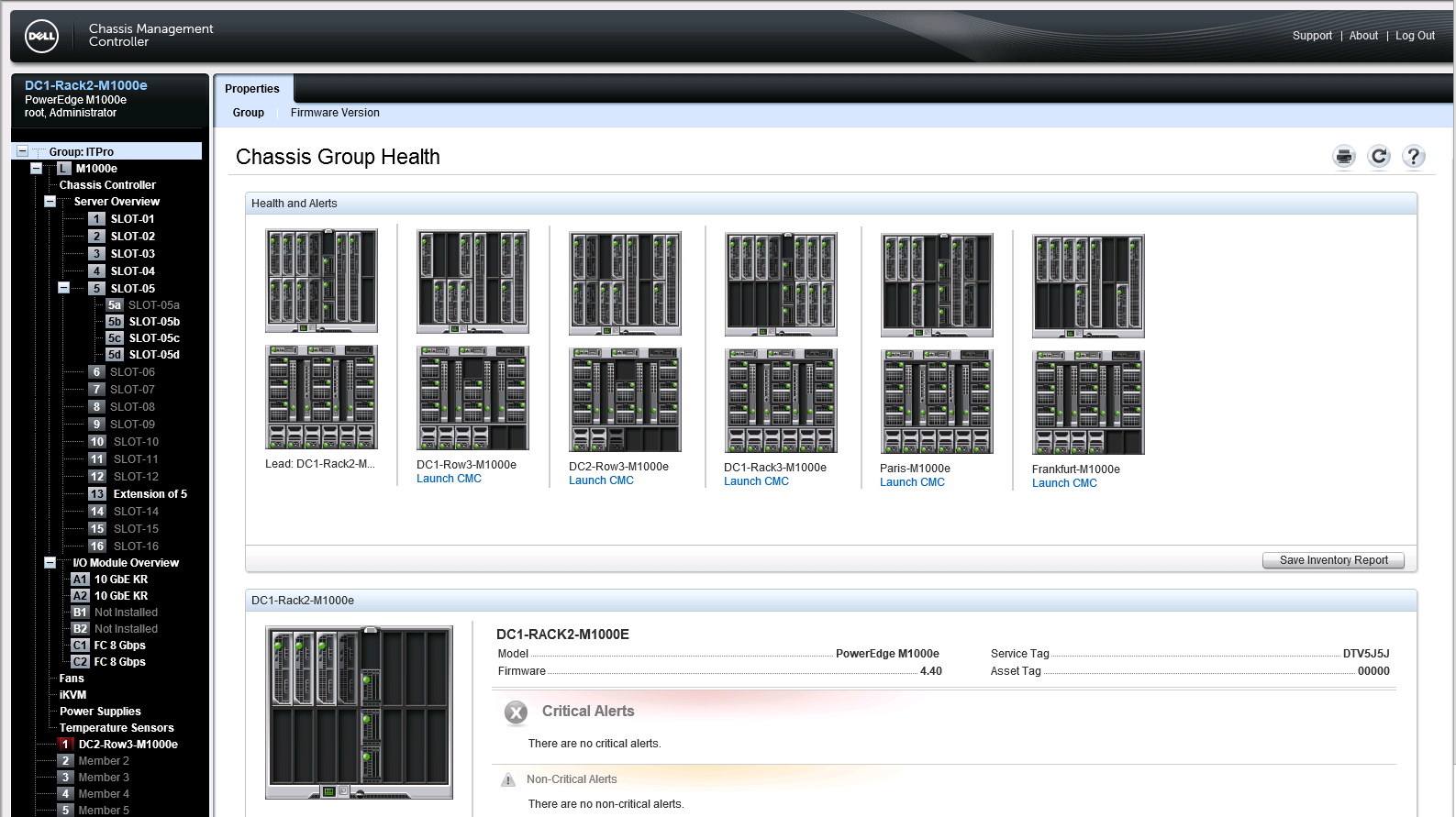
The new Chassis Group feature allows multiple M1000e systems to be monitored from one console
Power and chassis management
The dual redundant CMCs (chassis management controllers) deliver power management improvements. They monitor overall consumption, park any PSUs that aren't needed but always maintain N+1 redundancy.
A power budget can be applied to the entire chassis and if this threshold is breached you can set priorities for each server blade where they can be throttled back or powered down to ensure critical blades stay running.
AC redundancy allows two groups of three PSUs to be connected to separate power grids. Power is balanced between them and if one grid fails, power is distributed equally between the remaining PSUs. Features still missing from the console are real-time and historical graphical reporting on chassis power consumption.
The new Chassis Group feature allows up to nine chassis to be managed from the same interface. One chassis is nominated as the leader to which all other chassis connect for management access.
This means you only need to go to the group leader's console to access all other members. Each member can be distributed across various remote sites as they only need IP connectivity to the leader to be accessed.
Conclusion
The PowerEdge M1000e impresses with its design and features and the new hardware options make it even better. Chassis management plus blade and I/O module choices have been significantly improved and it has a few tricks up its sleeve that the competition can't match.
Verdict
The M1000e has benefitted from a consistent development program and offers some unique and innovative features. An excellent choice for server consolidation duties, it’s well designed and the new storage and server blades make it more versatile.
Chassis: 10U rack
Blade slots: 8 x full-height, 16 x half-height, 32 x quarter height
I/O modules: 6 x interconnect bays
Power: 2700W hot-plug PSUs (max 6)
Cooling: 9 x hot-plug fan modules
Management: Dell CMC (max 2)
Minimum spec: Chassis, 3 x 2700W PSUs, 9 x cooling fans, pass-through I/O module, 1 x CMC
Get the ITPro daily newsletter
Sign up today and you will receive a free copy of our Future Focus 2025 report - the leading guidance on AI, cybersecurity and other IT challenges as per 700+ senior executives
Dave is an IT consultant and freelance journalist specialising in hands-on reviews of computer networking products covering all market sectors from small businesses to enterprises. Founder of Binary Testing Ltd – the UK’s premier independent network testing laboratory - Dave has over 45 years of experience in the IT industry.
Dave has produced many thousands of in-depth business networking product reviews from his lab which have been reproduced globally. Writing for ITPro and its sister title, PC Pro, he covers all areas of business IT infrastructure, including servers, storage, network security, data protection, cloud, infrastructure and services.
-
 Cleo attack victim list grows as Hertz confirms customer data stolen – and security experts say it won't be the last
Cleo attack victim list grows as Hertz confirms customer data stolen – and security experts say it won't be the lastNews Hertz has confirmed it suffered a data breach as a result of the Cleo zero-day vulnerability in late 2024, with the car rental giant warning that customer data was stolen.
By Ross Kelly Published
-
 Women show more team spirit when it comes to cybersecurity, yet they're still missing out on opportunities
Women show more team spirit when it comes to cybersecurity, yet they're still missing out on opportunitiesNews While they're more likely to believe that responsibility should be shared, women are less likely to get the necessary training
By Emma Woollacott Published
-
 OpenAI wants developers using its new GPT-4.1 models – but how do they compare to Claude and Gemini on coding tasks?
OpenAI wants developers using its new GPT-4.1 models – but how do they compare to Claude and Gemini on coding tasks?News OpenAI says its GPT-4.1 model family offers sizable improvements for coding, but tests show competitors still outperform it in key areas.
By Ross Kelly Published